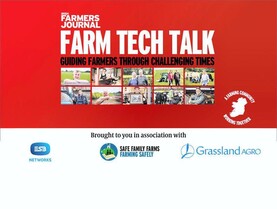History would normally show that the seasons tend to even out in the end.
The reality is that if it doesn’t happen, the consequences will be felt for a long time to come, as silage stocks, and also straw, are severely depleted across most farms.
Looking at recent trends in livestock numbers and cropping areas, it is clear that there are two sectors particularly vulnerable at present. The first is the suckler sector, with all the current data pointing towards a significant reduction in cow numbers this year.
As reported in the Livestock and Meat Commission bulletin last week, the number of beef calves registered to suckler cows so far this year is down 9% on the same period in 2017. Meanwhile, cow slaughterings (which includes dairy cows) at local factories to the end of April are the highest seen in over 20 years. With suckler cows housed on many farms for nearly nine months, it is not hard to see why many producers are currently disillusioned. Beef prices have remained solid this spring, and while that is welcome, the reality is that it won’t compensate for the higher costs incurred this winter.
The other sector under pressure at present is arable. While it is a small sector within NI agriculture, it is still very important. With winter plantings down 20% last autumn in NI, and a similar trend recorded across the island, straw is likely to be a commodity in high demand later this year.
In contrast to all this are landowners. As farmers look to replenish silage stocks, the demand for grass is very high, with some ridiculous prices paid. At the same time, some of these same landlords are also managing to claim the BPS and greening payment. No wonder a lot of farmers can’t see the end of this system quickly enough.






 This is a subscriber-only article
This is a subscriber-only article










SHARING OPTIONS: